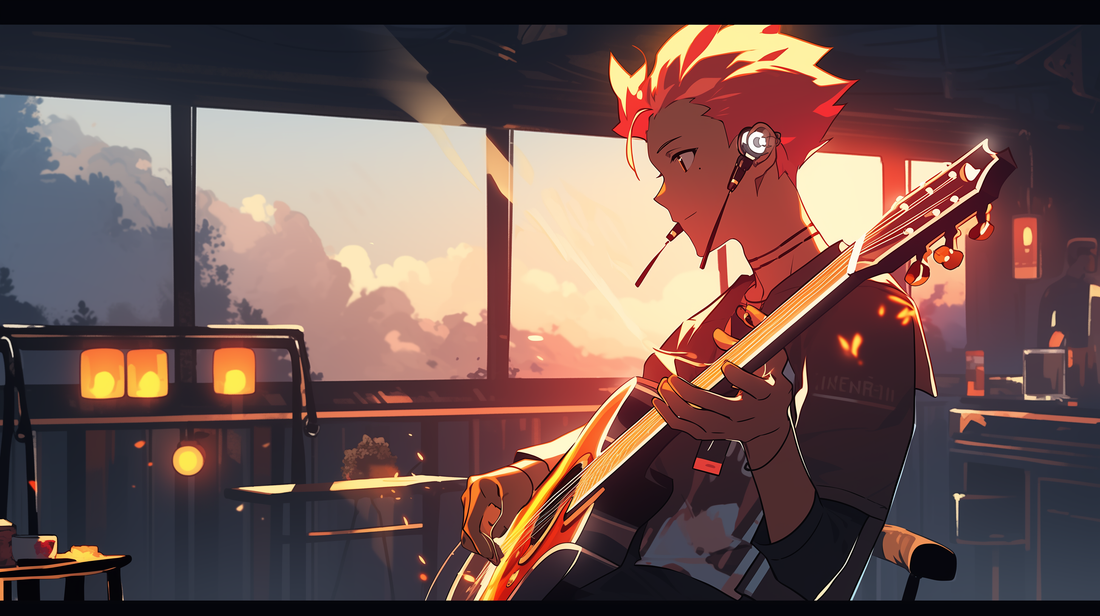
Mastering the Art of the Overdriven Sound
Share
The overdriven sound is a musical phenomenon that has left an indelible mark on the world of music. From the gritty, bluesy guitar tones of legends like Jimi Hendrix to the thunderous roar of distorted bass in modern rock, overdrive has become an essential tool in a musician's arsenal.
What is Overdriven Sound?
Overdrive is a form of audio distortion that occurs when a sound signal is pushed beyond its intended limits. This results in a warm, saturated sound that is often associated with a feeling of power and intensity. Overdrive can be achieved in various ways, but it is most commonly associated with guitar amplifiers. When a guitarist cranks up the volume on an amp, it can cause the signal to "clip," resulting in the familiar overdriven sound.
The History of Overdrive
The history of overdrive can be traced back to the early days of electric guitar and amplification. Musicians like Link Wray in the 1950s and Chuck Berry in the 1960s were some of the pioneers of overdriven guitar tones. However, it was the late 1960s and the advent of rock music that truly popularized overdrive. Guitarists like Jimi Hendrix and Eric Clapton, with their fuzz-laden and distorted tones, changed the landscape of music forever.
Over the decades, advancements in technology have allowed for more precise control of overdrive effects. Distortion pedals, modeled amplifiers, and digital effects have given musicians the ability to dial in their desired overdriven sound with remarkable accuracy.
Why Overdrive Matters
Overdriven sound is not limited to just electric guitars; it can be found in various musical contexts. Bass guitarists use it to add warmth and growl to their tone. Keyboard players and synthesizer enthusiasts use overdrive to give their sounds an edge. Even in vocal recording, a touch of overdrive can bring character and grit to a performance.
One of the primary reasons overdrive matters is the emotional impact it can have on a listener. A perfectly executed overdriven guitar solo can send shivers down your spine, and a distorted bassline can make you feel the music deep within your chest. It's no wonder that many iconic rock songs are characterized by their overdriven sound.
How to Achieve the Perfect Overdrive
If you're a musician looking to incorporate overdrive into your sound, here are some tips to help you achieve that perfect overdriven tone:
-
Choose the Right Gear: Start with the right equipment. A good-quality amplifier and overdrive pedal can make a world of difference in your tone.
-
Experiment with Gain and Volume: Adjust the gain and volume settings on your amplifier or pedal to find the right balance. Start with lower settings and gradually increase them until you reach the desired overdrive level.
-
Use Your Guitar's Volume Knob: Rolling back your guitar's volume knob can clean up an overdriven sound. This technique allows you to go from a full-on overdrive to a cleaner tone with ease.
-
Pay Attention to EQ: Tweak the equalization settings on your amp or pedal to shape the overdriven sound. Experiment with bass, midrange, and treble controls to find the perfect balance.
-
Practice Control: Achieving the perfect overdrive takes practice. Develop your touch and control, as nuances in your playing can significantly affect the tone.
The overdriven sound is a powerful and expressive tool that has shaped the landscape of music for decades. Whether you're a guitarist, bassist, keyboardist, or vocalist, mastering the art of overdrive can add depth and character to your music. Embrace the history, experiment with gear, and practice your control to achieve that perfect overdriven sound. It's a journey that can lead to musical heights you never thought possible.
